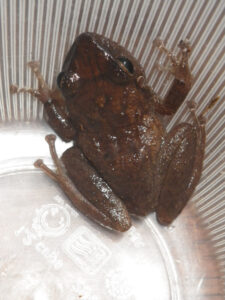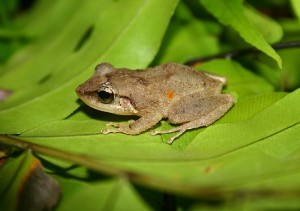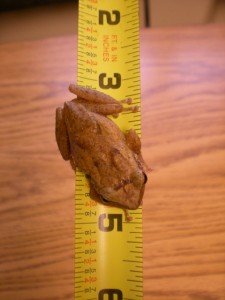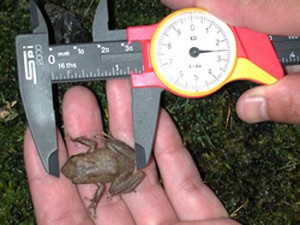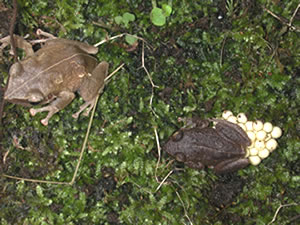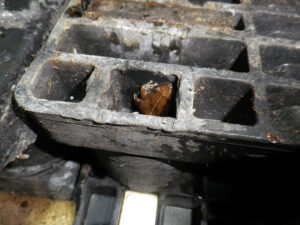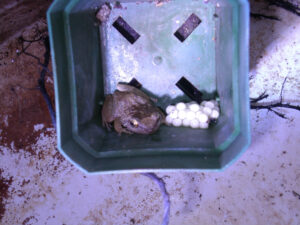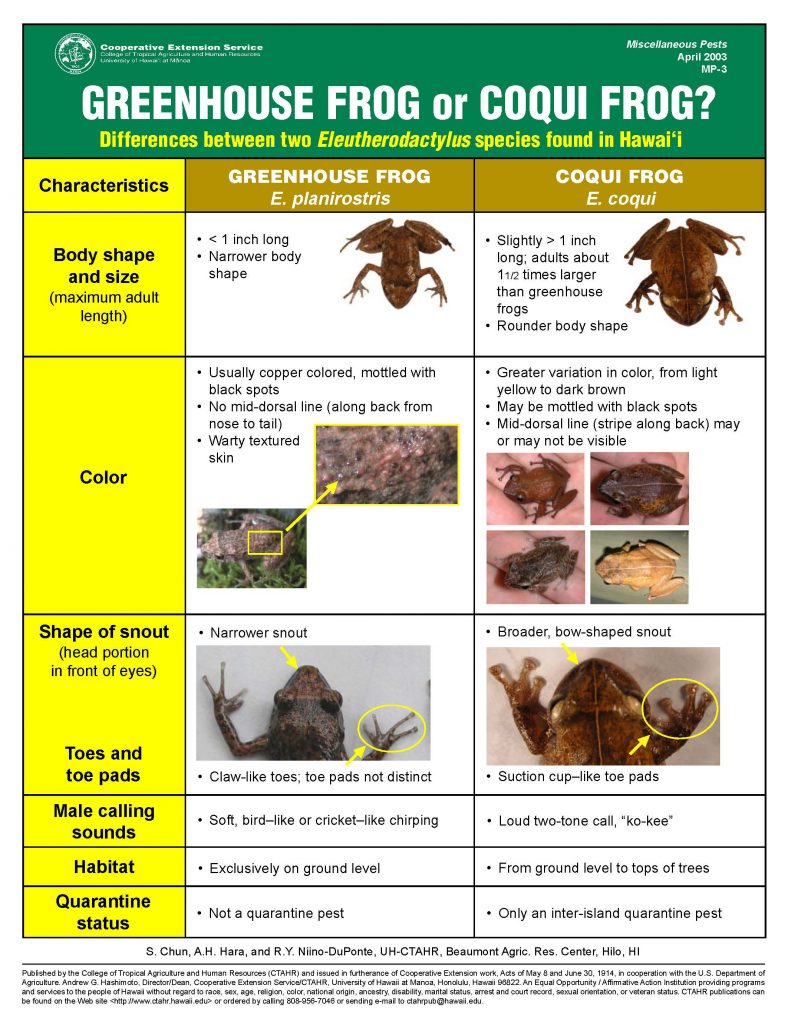If you suspect coqui frogs, please call 643-PEST (643-7378). You can also send suspect sounds and pictures to OISC. Please try to get a recording of the sound and/or picture of the suspect frog. You can send the recordings and/or pictures to OISC via email at oisc@hawaii.edu or text to 808-286-4616.
Coqui Frog (Eleutherodactylus coqui)
Order: Anura
All frogs in the order Anura are Hawai’i State Injurious Species. It is prohibited to release Injurious Species into the wild; transport them to islands or locations within the State where they are not already established; or export outside the State. The coqui is a tree frog, native to Puerto Rico, and was unintentionally introduced to Hawai’i around 1988.
Coqui frogs adaptability and Hawai’i’s lack of sufficient natural predators, have contributed to coqui populations’ rapid expansion. In Puerto Rico, a 20 x 20 meter plot averages 40 adult coqui frogs, while on Hawai’i Island, there are more than 200 adult coqui frogs per 20 x 20 plot. They now occupy an estimated 60,000 acres on Hawai’i Island and also have populations on Maui and Oʻahu. The remaining Hawaiian islands work every day to prevent hitchhiking coquis from becoming established state-wide.
Description:
- Small, nocturnal (night-active) frog about the size of a quarter, up to two inches in length
- Coqui frogs have distinct toe-pads
- Usually brown or gray-brown, may have a lighter stripe down its back
- Male’s mating call is a two-note, high-pitched call sounding like its name…”ko-KEE”
Look-a-Like:
Unlike the coqui frog, the greenhouse frog is common on O’ahu and isn’t controlled by any agency. The greenhouse frog is most often confused for the coqui. Both frogs are small and nocturnal, however there are some key differences to help distinguish the greenhouse frog from the coqui.
- Greenhouse frogs have long, thin toes with NO distinct toe pads (coqui have pronounced toe pads)
- Greenhouse frogs are less than 1 inch long (coqui are about 2 inches long)
- Greenhouse frogs have warty texture to their skin (coqui have smoother texture)
- Greenhouse frog’s skin is mottled with black spots with no mid-dorsal line down their back (coqui skin varies and mid-dorsal line is not always visible)
- Greenhouse frogs’ call sounds more “cricket-like” (coqui have 2-note call)
- CLICK HERE to see the photo comparison of the greenhouse & coqui frog.
Harm:
- No natural predators to keep populations in check (and no natural competitors), populations have reached 55,000 frogs per hectare in some Hawai’i populations (24,000 frogs per hectare in Puerto Rico)
- Eat huge quantities of insects, removing insects from forest floor to treetops.
- Loss of insect services such as pollination
- Disrupt the balance of vulnerable native ecosystems
- Potential food source for snakes if they were to arrive
- Loud, incessant and annoying call from dusk until dawn
- Adverse economic impacts on tourism
- Decreased export plant sales
- Disclosure requirement for real estate transactions, has resulted in decreased property values in some locations
On O’ahu:
There are three known breeding populations of coqui on Oʻahu: Waimānalo, Pālolo Valley, and the Kuliʻouʻou summit. The Hawaii Department of Agriculture (HDOA) is the lead response agency for coqui on Oʻahu. The Department of Land & Natural Resources (DLNR), and the Oʻahu Invasive Species Committee (OISC) are working to stop the spread of these infestations and eradicate them.
For quarterly updates on OISC work, visit:
In the past, a wildland population was located in Wahiawā in 2003 with over 100 calling frogs. Due to the efforts of HDOA, OISC, O’ahu Army Natural Resources Program, and DLNR, this population was eradicated in 2007.
Coqui frogs are still hitchhiking around the state and should be reported by calling the Hawai’i Department of Agriculture’s Pest Hotline by calling 808-643-PEST or online reporting at www.643pest.org.
